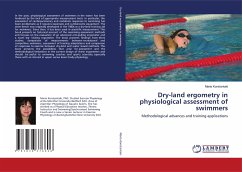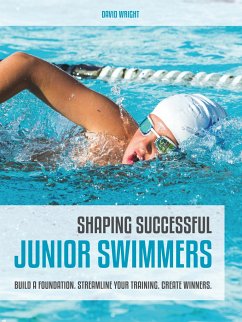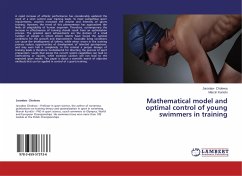
Dry-land ergometry in physiological assessment of swimmers
Methodological advances and training applications
Versandkostenfrei!
Versandfertig in 6-10 Tagen
45,99 €
inkl. MwSt.

PAYBACK Punkte
23 °P sammeln!
In the past, physiological assessment of swimmers in the water has been hindered by the lack of appropriate measurement tools. In particular, the assessment of cardiopulmonary and metabolic responses to swimming has been problematic as it requires expensive and cumbersome equipment. The swim bench was originally developed in the 1980s as a dry-land training aid for swimmers. Since then, it has been used in scientific measurement. This book presents an historical account of the swimming assessment methods and focuses on the evaluation of an advanced arm-pulling ergometer and a novel leg- kickin...
In the past, physiological assessment of swimmers in the water has been hindered by the lack of appropriate measurement tools. In particular, the assessment of cardiopulmonary and metabolic responses to swimming has been problematic as it requires expensive and cumbersome equipment. The swim bench was originally developed in the 1980s as a dry-land training aid for swimmers. Since then, it has been used in scientific measurement. This book presents an historical account of the swimming assessment methods and focuses on the evaluation of an advanced arm-pulling ergometer and a novel leg- kicking ergometer. The book presents findings from three studies; comparison of measurements between recreational and competitive swimmers, assessment of training adaptations and comparison of responses to exercise between dry-land and water based methods. This book presents the possibilities that arise for assessment and the methodological limitations in the current design of these ergometers andshould be useful to swimming coaches and sports scientists, especially those with an interest in upper versus lower body physiology.












